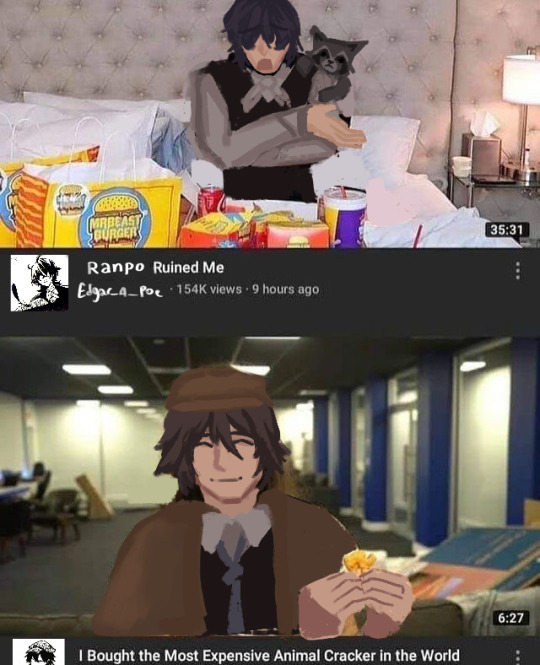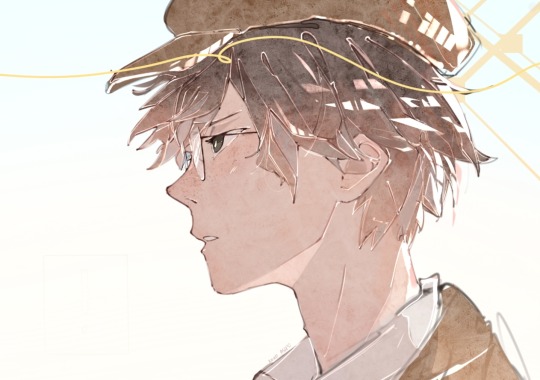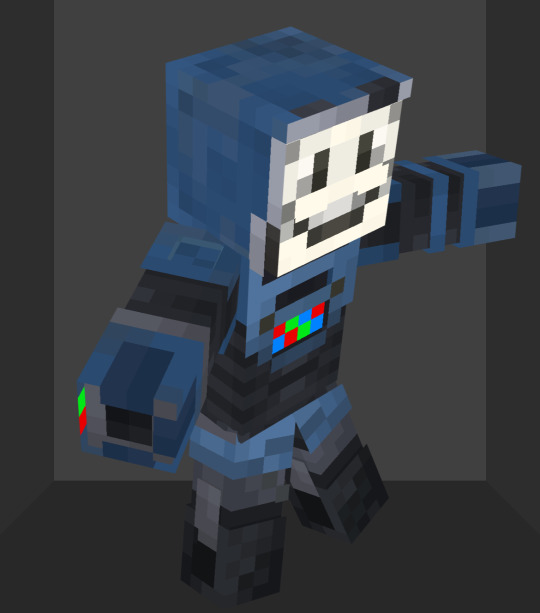#super-resolution
Explore tagged Tumblr posts
Text

Fixed Energy
Like filming the bustle of a city at night, life inside a cell can look like chaos. A static snapshot allows us to make sense of the surroundings, to spot subtle details, and perhaps some order in the noise. In these mammalian cells, we see clusters of mitochondria, the tiny organelles that churn out cellular energy, a molecule called ATP. Among other jobs, mitochondria also heat our cells from the inside – each is around a billion times smaller than a nuclear power facility. While watching organelles in motion has its advantages, here a new fluorescent stain reveals fine details in fixed cells – those frozen in time with chemicals – potentially yielding different perspectives on these tiny power stations in health and disease.
Written by John Ankers
Image from work by Jingting Chen and colleagues
College of Future Technology, Institute of Molecular Medicine, National Biomedical Imaging Center, Beijing Key Laboratory of Cardiometabolic Molecular Medicine, Peking University, Beijing, China
Image originally published with a Creative Commons Attribution 4.0 International (CC BY 4.0)
Published in Proceedings of the National Academy of Science (PNAS), April 2024
You can also follow BPoD on Instagram, Twitter, Facebook and Bluesky
15 notes
·
View notes
Text
The Power of Context: How Multimodality Improves Image Super-Resolution
📄 [PDF 다운로드] 📄 PDF 본문 내용 (영어) The Power of Context: How Multimodality Improves Image Super-Resolution Kangfu Mei* 1,2, Hossein Talebi1, Mojtaba Ardakani1, Vishal M. Patel2, Peyman Milanfar1, Mauricio Delbracio1 1 Google, 2 Johns Hopkins University Project Page: https://mmsr.kfmei.com/ Inputs Outputs Reference A close-up of a male lion with a dark mane, light tan face, and pink tongue sticking…
0 notes
Text
The World of Pixel Recurrent Neural Networks (PixelRNNs)

Pixel Recurrent Neural Networks (PixelRNNs) have emerged as a groundbreaking approach in the field of image generation and processing. These sophisticated neural network architectures are reshaping how machines understand and generate visual content. This article delves into the core aspects of PixelRNNs, exploring their purpose, architecture, variants, and the challenges they face.
Purpose and Application
PixelRNNs are primarily engineered for image generation and completion tasks. Their prowess lies in understanding and generating pixel-level patterns. This makes them exceptionally suitable for tasks like image inpainting, where they fill in missing parts of an image, and super-resolution, which involves enhancing the quality of images. Moreover, PixelRNNs are capable of generating entirely new images based on learned patterns, showcasing their versatility in the realm of image synthesis.
Architecture
The architecture of PixelRNNs is built upon the principles of recurrent neural networks (RNNs), renowned for their ability to handle sequential data. In PixelRNNs, the sequence is the pixels of an image, processed in an orderly fashion, typically row-wise or diagonally. This sequential processing allows PixelRNNs to capture the intricate dependencies between pixels, which is crucial for generating coherent and visually appealing images.
Pixel-by-Pixel Generation
At the heart of PixelRNNs lies the concept of generating pixels one at a time, following a specified order. Each prediction of a new pixel is informed by the pixels generated previously, allowing the network to construct an image in a step-by-step manner. This pixel-by-pixel approach is fundamental to the network's ability to produce detailed and accurate images.
Two Variants
PixelRNNs come in two main variants: Row LSTM and Diagonal BiLSTM. The Row LSTM variant processes the image row by row, making it efficient for certain types of image patterns. In contrast, the Diagonal BiLSTM processes the image diagonally, offering a different perspective in understanding and generating image data. The choice between these two depends largely on the specific requirements of the task at hand.
Conditional Generation
A remarkable feature of PixelRNNs is their ability to be conditioned on additional information, such as class labels or parts of images. This conditioning enables the network to direct the image generation process more precisely, which is particularly beneficial for tasks like targeted image editing or generating images that need to meet specific criteria.
Training and Data Requirements
As with other neural networks, PixelRNNs require a significant volume of training data to learn effectively. They are trained on large datasets of images, where they learn to model the distribution of pixel values. This extensive training is necessary for the networks to capture the diverse range of patterns and nuances present in visual data.
Challenges and Limitations
Despite their capabilities, PixelRNNs face certain challenges and limitations. They are computationally intensive due to their sequential processing nature, which can be a bottleneck in applications requiring high-speed image generation. Additionally, they tend to struggle with generating high-resolution images, as the complexity increases exponentially with the number of pixels. Creating a PixelRNN for image generation involves several steps, including setting up the neural network architecture and training it on a dataset of images. Here's an example in Python using TensorFlow and Keras, two popular libraries for building and training neural networks. This example will focus on a simple PixelRNN structure using LSTM (Long Short-Term Memory) units, a common choice for RNNs. The code will outline the basic structure, but please note that for a complete and functional PixelRNN, additional components and fine-tuning are necessary.
PixRNN using TensorFlow
First, ensure you have TensorFlow installed: pip install tensorflow Now, let's proceed with the Python code: import tensorflow as tf from tensorflow.keras import layers def build_pixel_rnn(image_height, image_width, image_channels): # Define the input shape input_shape = (image_height, image_width, image_channels) # Create a Sequential model model = tf.keras.Sequential() # Adding LSTM layers - assuming image_height is the sequence length # and image_width * image_channels is the feature size per step model.add(layers.LSTM(256, return_sequences=True, input_shape=input_shape)) model.add(layers.LSTM(256, return_sequences=True)) # PixelRNNs usually have more complex structures, but this is a basic example # Output layer - predicting the pixel values model.add(layers.TimeDistributed(layers.Dense(image_channels, activation='softmax'))) return model # Example parameters for a grayscale image (height, width, channels) image_height = 64 image_width = 64 image_channels = 1 # For grayscale, this would be 1; for RGB images, it would be 3 # Build the model pixel_rnn = build_pixel_rnn(image_height, image_width, image_channels) # Compile the model pixel_rnn.compile(optimizer='adam', loss='categorical_crossentropy') # Summary of the model pixel_rnn.summary() This code sets up a basic PixelRNN model with two LSTM layers. The model's output is a sequence of pixel values for each step in the sequence. Remember, this example is quite simplified. In practice, PixelRNNs are more complex and may involve techniques such as masking to handle different parts of the image generation process. Training this model requires a dataset of images, which should be preprocessed to match the input shape expected by the network. The training process involves feeding the images to the network and optimizing the weights using a loss function (in this case, categorical crossentropy) and an optimizer (Adam). For real-world applications, you would need to expand this structure significantly, adjust hyperparameters, and possibly integrate additional features like convolutional layers or different RNN structures, depending on the specific requirements of your task.
Recent Developments
Over time, the field of PixelRNNs has seen significant advancements. Newer architectures, such as PixelCNNs, have been developed, offering improvements in computational efficiency and the quality of generated images. These developments are indicative of the ongoing evolution in the field, as researchers and practitioners continue to push the boundaries of what is possible with PixelRNNs. Pixel Recurrent Neural Networks represent a fascinating intersection of artificial intelligence and image processing. Their ability to generate and complete images with remarkable accuracy opens up a plethora of possibilities in areas ranging from digital art to practical applications like medical imaging. As this technology continues to evolve, we can expect to see even more innovative uses and enhancements in the future.
🗒️ Sources
- dl.acm.org - Pixel recurrent neural networks - ACM Digital Library - arxiv.org - Pixel Recurrent Neural Networks - researchgate.net - Pixel Recurrent Neural Networks - opg.optica.org - Single-pixel imaging using a recurrent neural network - codingninjas.com - Pixel RNN - journals.plos.org - Recurrent neural networks can explain flexible trading of… Read the full article
#artificialintelligence#GenerativeModels#ImageGeneration#ImageInpainting#machinelearning#Neuralnetworks#PixelCNNs#PixelRNNs#SequentialDataProcessing#Super-Resolution
0 notes
Text

I heart HRT
#artists on tumblr#art#digital art#my art#hrt#horse race tests#jovial merryment#bullet’n board#door knob#cyan horse race tests#cyan hrt#lightning strikes thrice#downtown skybox#resolute mind afternoon#comely material morning#superstitional realism#procreate#to me. the races are all run by the green horse who is seeking a new vessel to inhabit#its looking for the fastest and strongest horse to take over which ends up being Jovial Merryment (Fearsome Fate)#losing horses are tuned into Nightmare horses (like Super being turned to Fantasy Fantasy Fantasy and Cyan being turned into Oob)#so really. being number one isnt a good thing
585 notes
·
View notes
Text

basically ranpoe in that one chapter/episode
#bungou stray dogs#bungo stray dogs#bsd#bsd ranpo#bsd poe#bsd ranpoe#ranpoe#bsd shitpost#sorry poe & karl look like shit; the picture i was painting over was super low resolution so it was hard to add details😭 but its a shitpost#so who actually cares#shitpost#bsd fanart#bsd meme#also yeah i know poe’s bg is inaccurate i just didnt feel like drawing over fucking nikakado avocados trash#my art
226 notes
·
View notes
Text

Ralsei plushie theory angst (Very sad)
#my art#deltarune#ralsei#I have to tag kris and tenna because they're technically also present.#kris dreemurr#tenna#deltarune spoilers#dt#Yeah im posting this at 1 am what are you gonna do about it. This picture doesnt need the morning light#I feel like the resolution I normally draw at is suddenly making text super hard to read lately. Is it just this font??
155 notes
·
View notes
Text



@yasammyweek (late) day 5 - track meet
#song - super trouper by abba#dont look at the scary bg ppl they might put a curse on u#i rushed em in at the last moment bc i didnt like the direction i was originally going in#jurassic world camp cretaceous#camp cretaceous#jurassic world chaos theory#chaos theory#realistically the area behind yaz would not be that vast and empty#i ran track ik how much is typically going on in there#but also i was lazy#yasmina fadoula#sammy gutierrez#yasammy#fanart#my art#c posts#yasammyweek#yasammy week#figured out the resolution issue WAHOO
503 notes
·
View notes
Text

so then the only person kamui can be is...
#sketch from yesterday with messy coloring idk#one day i will draw something cool i promise#first time drawing ranpo no way#the resolution is like 20 px bc i did this on like a super small canvas whoops#slay#bsd#bungou stray dogs#bungo stray dogs#fanart#ranpo edogawa#bsd fanart#ranpo#bungo stray dogs fanart#bsd art
3K notes
·
View notes
Text

#super hastily drawn thing to try out thermosensitive film I got (the one that’s black but gets transparent when heated) but it turned out-#TOO thermosensitive so it’s getting transparent with current room temp since it’s hot outside#half successful attempt. at least the sketch(?) ended up nice#you can see how pixelated it is here and there bc I accidentally picked tiny resolution#one piece#roronoa zoro#smoker the white hunter#smoker#smozo#my art#I. hardly ever draw them kissing. like actually visibly kissing and not inches apart. it feels like drawing something suggestive…. o)—<
127 notes
·
View notes
Text













Bowser, King of The Koopas

Someone asked for screenshots of Bowser in 8k res, and all I could do was deliver. So here are a few Bowser in the highest resolution possible. Enjoy <3
#dividers by cafekitsune#bowser#8k resolution#super mario bros#super mario bros movie#koopa#the super mario bros movie#mario bros#mario movie#screenshots#hdr#bowser 8k res screenshots
333 notes
·
View notes
Text

POLCAM Action!
POLCAM, a modification of a method for super-resolution microscopy called SMOLM by detecting polarisation with the addition of a polarising camera to any wide-field fluorescence microscope, plus open-source analysis software
Read the original research article here
Image from work by Ezra Bruggeman and colleagues
Yusuf Hamied Department of Chemistry, University of Cambridge, Cambridge, UK
Image originally published with a Creative Commons Attribution 4.0 International (CC BY 4.0)
Published in bioRxiv, May 2024 (not peer reviewed)
You can also follow BPoD on Instagram, Twitter and Facebook
4 notes
·
View notes
Text
The Power of Context: How Multimodality Improves Image Super-Resolution
📄 [PDF 다운로드] 📄 PDF 본문 내용 (영어) The Power of Context: How Multimodality Improves Image Super-Resolution Kangfu Mei* 1,2, Hossein Talebi1, Mojtaba Ardakani1, Vishal M. Patel2, Peyman Milanfar1, Mauricio Delbracio1 1 Google, 2 Johns Hopkins University Project Page: https://mmsr.kfmei.com/ Inputs Outputs Reference A close-up of a male lion with a dark mane, light tan face, and pink tongue sticking…
0 notes
Text




yeah ok he’s done
#i’m not super happy with it but. yknow#really really hard to put his face on a minecraft skin#sighhhhhhhhhh#i can’t really do any better#i tried multiple ways of doing the face and this is still the best i got#fnv#theri’s art#yes man#yes man fnv#if the image file there doesn’t work dm and and i’ll figure out a way to send you a file with a better resolution#it shoulddd work??
137 notes
·
View notes
Text

elizabeth schuyler was a sister and a daughter. elizabeth hamilton is all that, and a revolutionary's wife, and then the wife of the secretary of the treasury, scorned.
she burns letters, and she commits his penmanship to memory. he only began to loop the H in his name after the end of the war. he used to write like a hurricane was at his heels, in his youth. every poem etched with a shard of his soul, bleeding light like cathedral glass.
she loves him, still. she doesn't think she could ever stop. but she lets him think she has, and eliza is many things, but now, above all else, she is a mother.
so she burns every letter he has written her-- burns months and years and decades-- and she rereads her life in reverse, in the light of her candle flame. she erases his past, every bit of it with love, for her children, for him.
years of her life crumble into ash beside his.
#hamilton musical#hamilton fanart#eliza schuyler#burn hamilton#elizabeth schuyler#elizabeth schuyler fanart#thinking about eliza keeping every letter alexander wrote her-- every memory from the years of her youth spent waiting for him to come back#from the war. and then burning all the memories to protect her family. and then losing philip and forgiving alexander#and then losing alexander too. sometimes i think about how when she erased his past for his sake she gave up her own too#her last song is dedicated to him the way she dedicated the rest of her life to protecting his legacy--#and she calls out his obsession with his legacy in burn. but she gave up her own legacy for his in the end.#and i don't think she cared about her legacy-- but i don't think she wouldn't have mourned the loss of those letters by the end of her life#so something something a mother's resolution something something loving someone so deeply you pick up where they left off#loving too deeply for words and so deeply that their goal becomes your torch to carry. Many thoughts#(<--- about the musical characters and the narrative the musical portrays!!!!)#hamilton fandom#hamliza#technically??? not super attached to shipping in hamilton but i do have my interests. feel free to guess LMAO (sideeyes spones)
134 notes
·
View notes
Text

a couple doodles to get myself back in the swing of things
#sonic#sonic the hedgehog fanart#sonic the hedgehog#sth#sth fanart#super sonic#blaze the cat#amy rose#thank fuckign god i could draw something before the end of january#my new years resolution is intact#thank you sonic big bang server i finally got the motivation to do smth sonic related again#also this is my favorite sonic face ive ever drawn hehehehar#anyway#sonic fanart#sonic art#amy rose fanart#blaze the cat fanart#art#art of crane
80 notes
·
View notes
Text

Happy 17th birthday Super Paper Mario!!
#damn this game is almost a legal adult#if the resolution is a little shit its becuase i did this on a magma board#trying to experiment with my art style woooo#super paper mario#spm#my art#spm tippi#tippi#fanart#artists on tumblr
401 notes
·
View notes